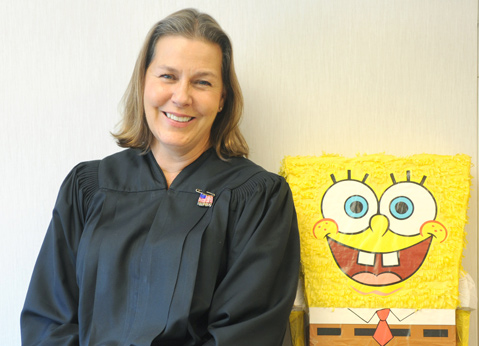
Over the next several months, the Santa Barbara bench will lose two judges with 53 years of combined experience. The first to step down will be Judge Denise de Bellefeuille, who will retire September 24. De Bellefeuille first donned the black robes 21 years ago after being appointed by Republican Governor Pete Wilson. She was the first female judge on the South Coast.
Judge Frank Ochoa announced last week he will be retiring, as well, effective early January. That will bring to a conclusion a 32-year career. When he was appointed in 1983 by Governor Jerry Brown, Ochoa was the first Hispanic to serve on the Santa Barbara County bench in the 20th century. And at 32 years old, he was the youngest judge in the state. “I’ve now served half my entire life as a judge,” he commented. “It’s time for me to try something else.” Ochoa has been teaching at UCSB the last five years, which he said he’s enjoyed immensely. “I’ve been gratified to help a number of young people make their way into the law and legal careers,” he said. “I can tell you that’s infinitely more rewarding than figuring out how many years to sentence young people that same age to state prison.”
De Bellefeuille said she intends to take a month off and make herself available as an assignment judge, filling in for other judges either sick or on vacation. For most of her judicial career, de Bellefeuille’s caseload has exclusively involved civil litigation, though for the past 18 months, she’s handled the juvenile court assignment, as well. That involves minors accused of committing crimes and minors who’ve been abused by their adult caregivers. “Often, we find they’re one and the same,” she said of the young people. As juvenile judge, de Bellefeuille took satisfaction that she got to help many teens accused of delinquency before “the school to prison pipeline became manifest” in their lives. “I’m not saying we’re miracle workers, but we could make a difference.”
When de Bellefeuille first took the bench after 13 years as a prosecuting attorney, she was at times outspoken about the “good old boys club” that permeated much of Santa Barbara’s legal establishment. Although there were two women on the North County bench when she arrived, she soon found herself alone after one retired and the other was forced from office after brandishing a firearm during a domestic dispute. She remembers the silence with which her suggestions would be greeted at certain meetings, only to be applauded when subsequently restated by a male counterpart. Today, she noted, there are eight women judges and two women commissioners, and the culture of the courts has changed accordingly. “There’s a critical mass now, and it’s made a world of difference. It seems like such a big deal, but really, it’s just normal.”
In her own practice, de Bellefeuille has embodied that critical mass. While hardly the only judge to be protective and solicitous of her jurors, she’s certainly the first — and only — to make a point to serve jurors apple strudel every Wednesday. If jurors nod off during trial — as sometimes happens — she’s quick to offer them a strong cup of her personal brew. While the strudel is offered to attorneys for both sides, as well, she noted that such gestures help alleviate the tensions many jurors tend to feel. “I tell all my jurors that they’re the judge in the case. If I had the budget, I’d buy them all black robes. I just referee the way the evidence is presented.”
De Bellefeuille has also helped school new judges. Among the many pitfalls she warns them about is their own personal bias. “We all have them. If you want to be a good judge, you can’t ignore them,” she cautioned. The court system, she said, reflects the bias of society at large. “We have white kids who tend to get off more leniently than their brown-skinned peers. They’ll tend to get informal probation more often, where the brown kids will wind up with something a little more punitive. Judges have to be conscious of this. You have to work on it.”



